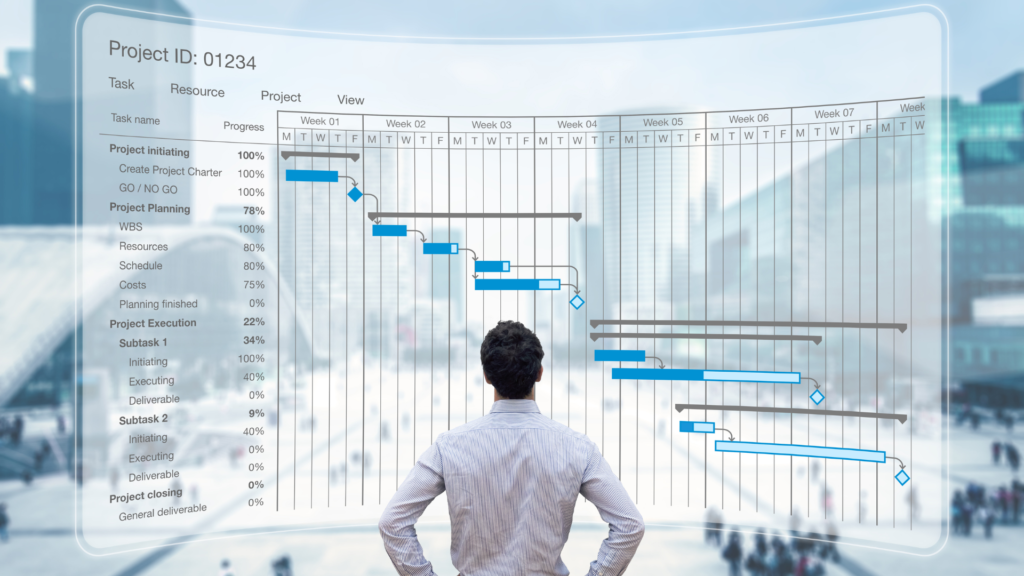

A State of California department was facing significant challenges in managing the complex, multifaceted program, essential for consolidating and optimizing controlled substance data in California, requiring meticulous project management and procurement support across various stages of its California’s procurement lifecycle to secure funding and onboarding vendor for this project. The existing project management practices were not fully aligned with the California Department of Technology’s Project Management Framework (CA-PMF) and Project Approval Lifecycle (PAL), leading to potential inefficiencies, increased risks, and suboptimal utilization of resources. The absence of a comprehensive and standardized approach to project management could result in delays, budget overruns, and failure to meet the program’s objectives and stakeholder expectations. The department was seeking support in the following areas:
- Strategic project planning and implementation support.
- Regular monitoring and reporting, including risk and change management.
- Guidance in developing technical requirements and procurement documentation.
- Assistance in staff mentoring and development to foster a culture of best practice adherence and continuous improvement.
- Risk Management Challenges requiring a structured approach to identify and mitigate risks.
- Compliance and Reporting Gaps leading to non-compliance with CA-PMF and PAL requirements could result in project governance issues and inadequate reporting mechanisms.
To address the complex needs of the State of California Department, we proposed a robust and comprehensive project management solution that aligns with the California Department of Technology’s Project Management Framework (CA-PMF) and the Project Approval Lifecycle (PAL). This solution focuses on delivering expertise and structured processes across all phases of the project management lifecycle to ensure successful execution and completion of the Program requirements.
Key Components of the Solution:
- Integrated Project Management Services:
- Facilitate all stages of the project lifecycle, including initiation, planning, execution, monitoring, controlling, and closing.
- Ensure alignment with CA-PMF and PAL requirements.
- Implement a Project Charter, Project Management Plan, and other subordinate documents to guide the project.
- Risk and Change Management:
- Develop comprehensive risk and issue logs.
- Implement a change request management system.
- Conduct high-level risk assessments and develop mitigation strategies.
- Reporting and Documentation:
- Provide detailed Monthly Written Status Reports (MSRs) and Weekly Status Reports (WSRs).
- Maintain a project document library for all project-related documentation.
- Technical and Governance Support:
- Assist in developing technical requirements and procurement documents in line with State’s PAL framework and SIMM-19 guidelines.
- Provide guidance in governance planning, design, and implementation.
- Support in the Systems Development Lifecycle process.
- Performance and Quality Control:
- Establish performance criteria to measure project success, system quality, timeliness, and customer satisfaction.
- Ensure continuous monitoring and quality control throughout the project.
- Staff Mentoring and Capability Building:
- Lead, coach, and mentor project managers and team members using best practices in project management.
- Develop and implement training programs to enhance team effectiveness and skillsets.
- Strategic Collaboration and Communication:
- Coordinate with the State Team for response preparation to IT Project Office assessments.
- Create and distribute management information to stakeholders and executive leadership for increased project visibility.
- Project Schedule Management:
- Develop and manage the project schedule, ensuring adherence to the Schedule Management Plan.
- Implementation Strategy:
- Phase 1 – Initiation: Establish a solid project foundation by developing project charters, identifying stakeholders and creating RACI chart.
- Phase 2 – Planning and Setup: Establish a solid project foundation by developing project plans, sub-plans, and governance structures.
- Phase 3 – Execution and Monitoring: Implement the plans, monitor progress, and manage changes and risks actively.
- Phase 4 – Reporting and Communication: Maintain regular and transparent communication with all stakeholders through detailed reports and meetings.
- Phase 5 – Closure and Evaluation: Conduct project closure activities, including final reporting, and post-implementation evaluation to capture lessons learned and successes.
Radian Solutions offered services to manage the State’s Program and offered a significant step towards achieving operational excellence, compliance, and strategic success within the State Department. This initiative not only promises immediate project benefits but also lays the foundation for long-term organizational growth and development. Knowledge transfer and capability building will ensure that the State employees remain at the forefront of project management excellence.
- PMI’s Project Management Book of Knowledge (PMBOK)
- California’ Project Management Framework (CA-PMF)
- California Department of Technology’s Project Approval Lifecycle (PAL)
- California’s Statewide Information Management Manual (SIMM)
- State Administrative Manual (SAM)
- Organizational Change Management (OCM)
- Business Process Re-engineering standards (BPMN)
- Systems Development Life Cycle (SDLC)
